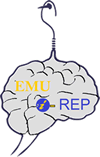JavaScript is disabled for your browser. Some features of this site may not work without it.
| dc.contributor.advisor | Rizaner, Ahmet (Supervisor) | |
| dc.contributor.author | Behravesh, Alireza | |
| dc.date.accessioned | 2025-06-03T07:20:49Z | |
| dc.date.available | 2025-06-03T07:20:49Z | |
| dc.date.issued | 2023-09 | |
| dc.date.submitted | 2023-09 | |
| dc.identifier.citation | Behravesh, Alireza. (2023). Classification of Porosity in Sulfur-Based Concrete Samples Using Deep Neural Networks. Thesis (M.Tech.), Eastern Mediterranean University, Institute of Graduate Studies and Research, Sch. of Computing and Technology, Famagusta: North Cyprus. | en_US |
| dc.identifier.uri | http://hdl.handle.net/11129/6295 | |
| dc.description | Master of Technology in Information Technology. Institute of Graduate Studies and Research. Thesis (M.Tech.) - Eastern Mediterranean University, School of Computing and Technology, 2023. Supervisor: Prof. Dr. Ahmet Rizaner. | en_US |
| dc.description.abstract | This study investigates the application of deep learning and machine learning techniques for the classification of sulfur-based concrete samples based on porosity, which is an important property that affects the strength, durability, and permeability of concrete. The first part of the research focused on creating a unique dataset of sulfur-based concrete samples and calculating features such as porosity. The percentage porosity was then calculated, and images were labeled as low porosity or high porosity based on the percentage of porosity. The images of physical samples were automatically annotated by image processing techniques to create a dataset. The second part of the study aimed to train and test a neural network to predict and classify samples based on porosity. We classified concrete images into two separate classes of low and high porosity using a basic Convolutional Neural Network (CNN) and transfer learning with a pre-trained model such as AlexNet. Porosity was calculated as the distribution of air voids and aggregates through the concrete sample. The comparison of two of the best models and finding the accuracy and other performance metrices of the networks were done using confusion matrices. The conclusion of this study shows that pre-trained models with transfer learning, such as AlexNet, can be used to accurately and automatically classify sulfur-based concrete samples based on porosity, which could lead to faster and more efficient quality control of concrete production. This study also sets the stage for further research into the application of artificial intelligence methods in the field of civil engineering, as it offers a new method for classifying and predicting the characteristics of construction materials such as concrete. In future studies, the dataset created in this study can also be used for regression analyses. | en_US |
| dc.description.abstract | ÖZ: Bu çalışmada, betonun mukavemetini, dayanıklılığını ve geçirgenliğini etkileyen önemli bir özellik olan gözenekliliğe dayalı kükürt bazlı beton numunelerinin sınıflandırılması için derin öğrenme ve makine öğrenme tekniklerinin uygulanması araştırılmaktadır. Araştırmanın ilk kısmında, kükürt bazlı beton numunelerden oluşan bir veri tabanı oluşturmaya ve gözeneklilik gibi özellikleri hesaplamaya odaklandı. Daha sonra gözeneklilik yüzdesi hesaplandı ve görüntüler, gözeneklilik yüzdesine göre düşük gözeneklilik veya yüksek gözeneklilik olarak etiketlendi. Fiziksel numunelerin görüntüleri, bir veri seti oluşturmak için görüntü işleme teknikleriyle otomatik olarak tanımlandı. Çalışmanın ikinci kısmında, gözenekliliğe dayalı örnekleri tahmin etmek ve sınıflandırmak için bir sinir ağını eğiterek test etmek amaçlandı. Temel bir Konvolüsyonel Sinir Ağı (CNN) ve AlexNet gibi önceden eğitilmiş bir model kullanılarak somut görüntüler düşük ve yüksek gözeneklilik olarak iki ayrık sınıfına ayrıştırldı. Gözeneklilik, hava boşluklarının ve agregaların beton numunesi boyunca dağılımı olarak hesaplandı. En iyi iki modelin karşılaştırılması ve ağların doğruluk ve diğer performans ölçümlerinin bulunması karışıklık matrisleri kullanılarak yapılmıştır. Bu çalışmanın sonucu, AlexNet gibi transfer öğrenmeli önceden eğitilmiş modellerin, beton üretiminin daha hızlı ve daha verimli kalite kontrolüne yol açabilecek gözenekliliğe dayalı kükürt bazlı beton numunelerini doğru ve otomatik olarak sınıflandırmak için kullanılabileceğini göstermektedir. Bu çalışma aynı zamanda, beton gibi yapı malzemelerinin özelliklerinin sınıflandırılması ve tahmin edilmesi için yeni bir yöntem sunduğundan, inşaat mühendisliği alanında yapay zeka yöntemlerinin uygulanmasına yönelik daha fazla araştırma için zemin oluşturmaktadır. Gelecekteki çalışmalarda, bu çalışmada oluşturulan veri seti regresyon analizleri için de kullanılabilecektir | en_US |
| dc.language.iso | eng | en_US |
| dc.publisher | Eastern Mediterranean University (EMU) - Doğu Akdeniz Üniversitesi (DAÜ) | en_US |
| dc.rights | info:eu-repo/semantics/openAccess | en_US |
| dc.subject | School of Computing and Technology | en_US |
| dc.subject | Artificial intelligence | en_US |
| dc.subject | Machine Learning, Deep Learning, Sulfur-based Concrete, Image Classification, Convolutional Neural Networks | en_US |
| dc.title | Classification of Porosity in Sulfur-Based Concrete Samples Using Deep Neural Networks | en_US |
| dc.type | masterThesis | en_US |
| dc.contributor.department | Eastern Mediterranean University, School of Computing and Technology | en_US |
Files in this item
This item appears in the following Collection(s)
-
Theses (Master's and Ph.D) – SCT
This Collection is maintained and organized by the EMU Library.









